The Federated Model of strategic change management

The “big flip” to the stakeholder view of orchestrating strategic change
Many of us during our careers have focused on providing change management support as a complement to the team delivering solutions to the business. Sometimes, we are brought in late in the project cycle, which can reduce the value of change management for both the stakeholders and the initiative by compressing the time for engagement, sharing and adoption ease.
Of course, we all know that change management should be baked into transformation initiatives from the conception phase onwards for maximum success, but we also know that changing the enterprise culture so this can happen is challenging because of the paradigm shift it requires.
In this article, I share how iTalent Digital uses the Federated Model powered by AI and automation to help enable this paradigm shift and achieve what we call the “big flip” to a stakeholder view of strategic change orchestration, where change adoption is factored in from the beginning of the project life cycle.
Aligning the change management life cycle with the project life cycle, end to end, improves stakeholder satisfaction and value. Using technology to gain insights from a data-driven understanding of the high-level change magnitude all the way down to more granular change impacts contributes to more effective orchestration through better stakeholder engagement, change plans and decision-making.
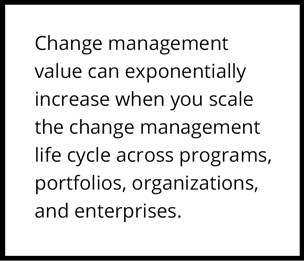
In addition, change management value can exponentially increase when you can scale the change management life cycle across programs, portfolios, organizations, and enterprises.
Traditionally, change initiatives are generated by enterprise objectives driven by strategies from the C-suite. The focus is on the desired business outcome, and people are expected to naturally follow suit.
The truth of the matter is that no business value can be realized until and unless people change the way they work. But how can change leaders ensure that initiatives are not only built around the solution, but are built around the people?
At iTalent Digital, we have developed an approach called the Federated Model to enable a people-centered view of portfolio and program deployment. It helps change leaders keep their eye on the people side of change by gaining a holistic understanding of the change breadth, complexity and risk. This can be achieved by delivering a consistency of strategy while still enabling customization of tactics.
The Federated Model
A consistent strategy provides the visibility and transparency to stay strategically aligned across organizations, portfolios and programs. As the program results accumulate, you can start to manage change saturation and keep that big picture in focus no matter what your lens is (enterprise, organization, portfolio…) and especially when you are looking at change from a stakeholder perspective.
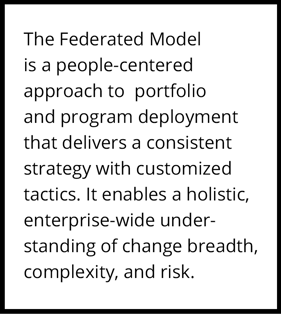
A holistic, enterprise-wide view of change management considers a number of different operational and governance layers, each with its own information requirements:
-
The enterprise is looking to understand key strategic change information holistically, across all organizations.
-
Organizations align to enterprise strategic objectives and goals, but they also have their own strategies and goals, and they desire to see change across their portfolios that are executing to achieve business outcomes.
-
Typically, organizations have multiple portfolios. As an example: transform the business, optimize the business and run the business.
-
Underneath each portfolio are the programs and projects that are executing to deliver solutions to achieve business outcomes.
-
Cutting across all of it are the stakeholders whose work needs to change in order to realize the desired business value. While they are of primary importance (if they don’t adopt the change, the initiative fails), traditional change models often consider them too late in the project cycle.
At each of these levels, you need to understand the taxonomy, governance, information, and behavior needs to ensure the sharing of data-driven insights at each level.
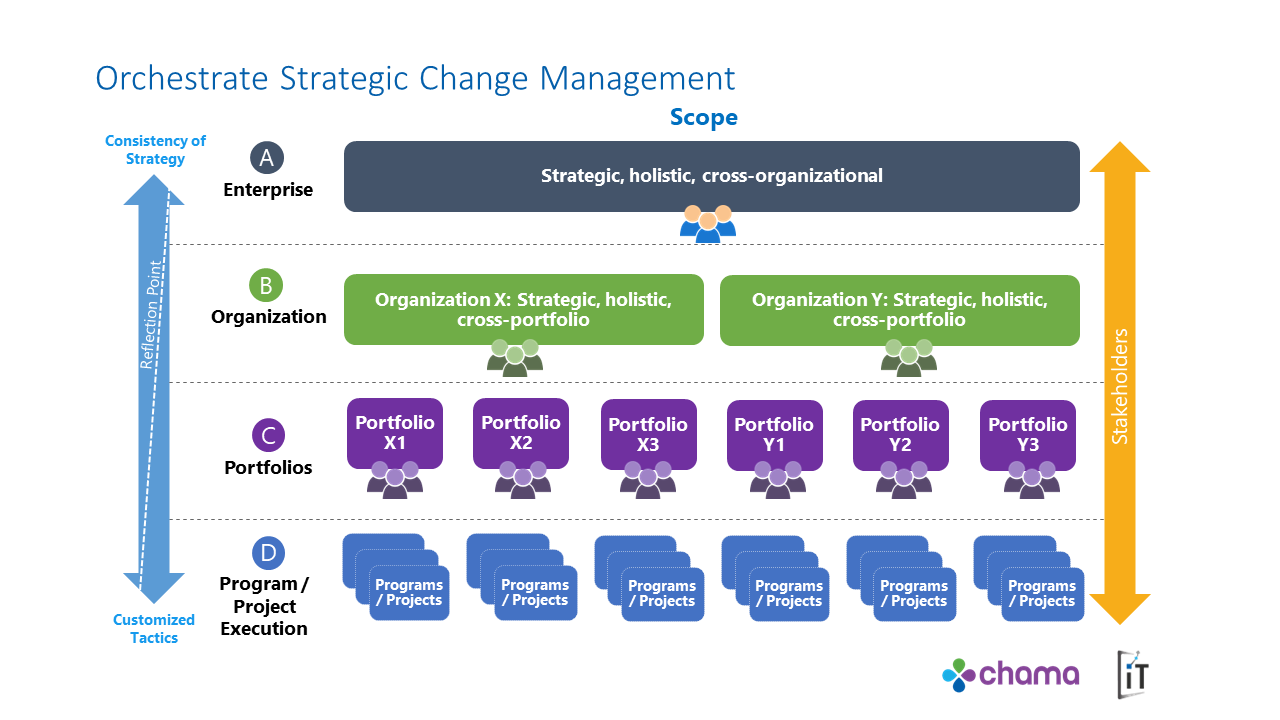
Obstacles to achieving holistic views of change initiatives
With that in mind, let’s look at the obstacles to achieving holistic views that we have encountered with traditional approaches. Most change leaders have probably tried various ways to manage and gather information across a program or portfolio.
Some approaches use templates and assessments recorded in spreadsheets, then add a manual touch to extract, transform and load the data before transferring it into different graphics tools to represent what is really going on within the portfolio.
The challenge comes in when you grow your vision beyond a portfolio to an enterprise perspective. The more holistic the perspective, the more data there is to extract, load and transform, which means that if the data is spread across different templates and spreadsheets and needs to be manually manipulated, the effort required to get to actionable insights grows exponentially.
This is why truly holistic views are simply not scalable without automation.
Moreover, in my experience as a change manager, you learn significant information about individual stakeholders through each engagement and it can be hard to share that information with all your colleagues across the enterprise, so providing a technology-powered knowledge-sharing vehicle for key lessons to be gathered and shared is important.
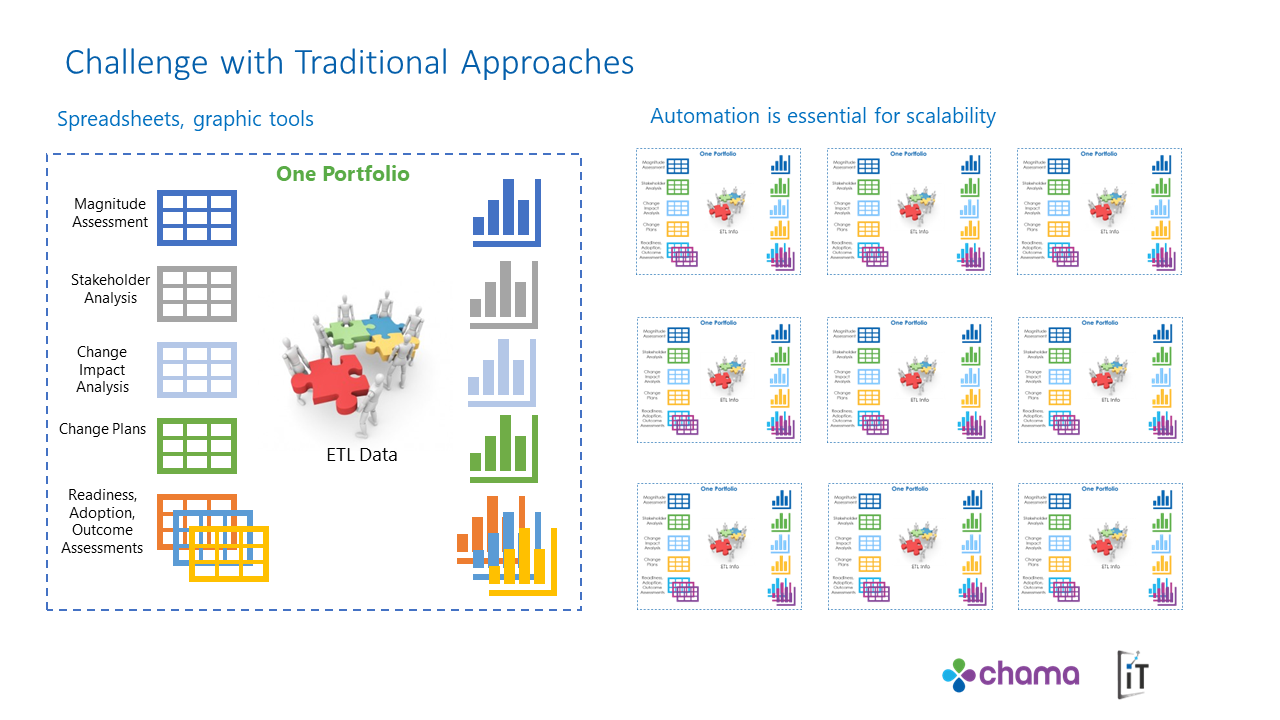
Best practices for implementing the Federated Model
-
As stated previously, it’s important to define the minimum requirements (information, governance, taxonomy…) at each layer of the model because you want your change initiatives to be data-driven in order to optimize strategic change results.
-
Select and pilot a specific program to start. We recommend starting with the transformation (or similar) portfolio. Then, start at the top of the model and define the minimum requirements for the enterprise level (C suite). Embed change management from the very beginning of the process, with a change magnitude assessment (CMA) for each project in the portfolio. This provides better understanding of the change risk, resources needed and how your change landscape is impacted across the program and portfolio. Dive deeper and identify the minimum requirements for each subsequent layer (portfolio, program, project). Ensure that all the leaders, project and change managers within that portfolio understand what the minimum requirements are for each layer.
-
Determine the rollout approach. Use the data from your change magnitude assessments (as well as feedback from previous programs) to decide what you will include and what you will not as you move to the Federated Model. For instance, you may elect for programs that are within x months of completion to finish as-is.
-
Armed with data from this pilot portfolio, gradually expand the model to other portfolios and then to other organizations. As you go along, you will accumulate more and more data that becomes more meaningful and valuable as you move up the chain from the portfolio to the organization to the enterprise. You will find that as your decisions and conversations become increasingly data-driven, programs, portfolios and organizations will move in lockstep and change goes from being something that the transformation leaders are trying to “sell” to others to being instead an integral part of how your business operates.
-
Create a continuous improvement and agile mindset. Learn, discover, and adapt to new learnings and feedback.
Tracking and analyzing the data
When you are dealing with this volume of data, you need a tool for capturing, analyzing, and reporting it. iTalent Digital developed Chama, the AI-enabled cloud-based software designed specifically for change management.
Not only does it enable change leaders, managers, and stakeholders to understand change at every layer of the model, but it enables you to see change through a variety of different lenses to see both the forest and the trees. See the entire picture of what is changing, who is impacted and by how much at the holistic enterprise level, and drill down into everything that is going on all the way to the individual stakeholder level.
Our enterprise customers have not only seen the ROI on their transformation investments surge but using Chama as their change data management tool has delivered unexpected results in terms of inter-organizational dialogue, creating a culture that embraces change, and making better decisions driven by superior data.
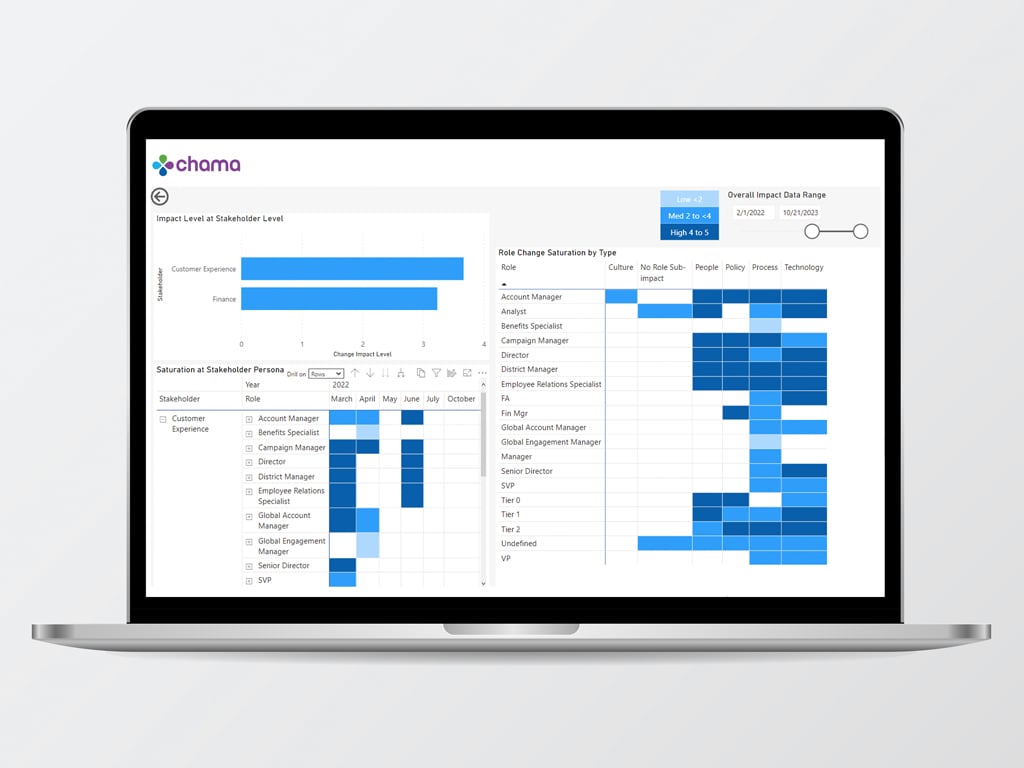
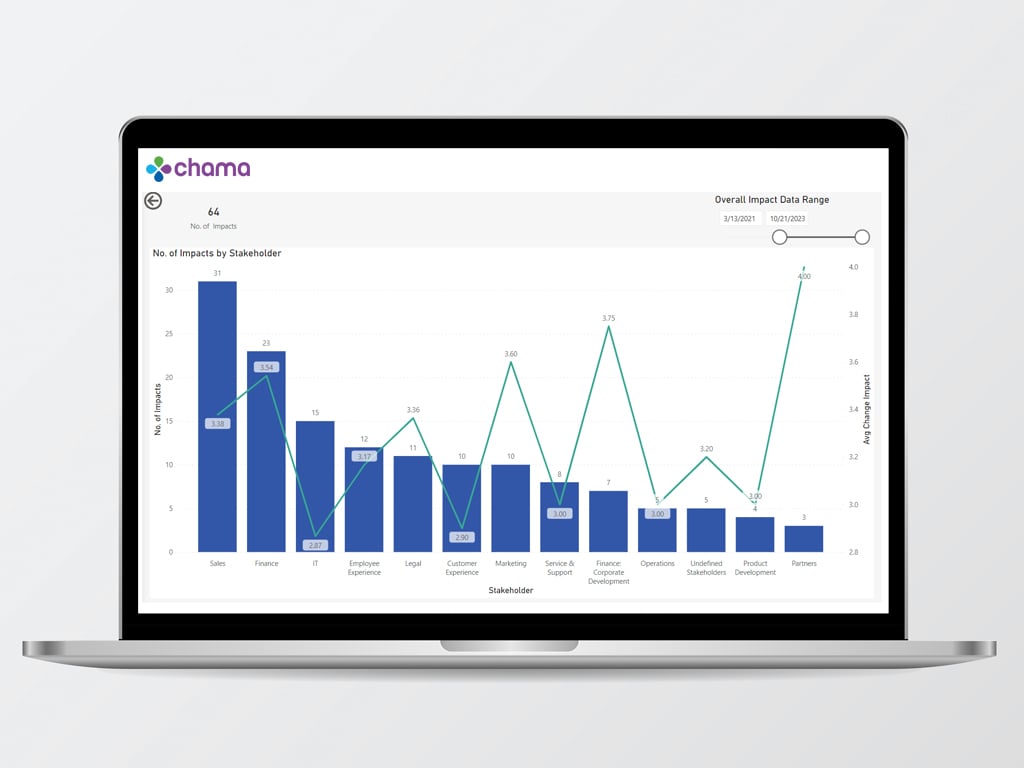
Summing it up: orchestrating strategic change with the Federated Model
Orchestrating strategic change with the Federated Model maximizes the ROI of transformational programs by driving optimal stakeholder adoption and enabling organizational change agility and resilience.
In conclusion, remember these key visionary concepts:
-
Drive change that puts the stakeholder at the heart of change for transformational programs, taking a user experience-centered approach throughout the portfolio/program life cycle.
-
Orchestrate change holistically across impacted stakeholder groups at a program and portfolio level to manage priorities, impacts, & saturation.
-
Ensure that key behavioral changes that drive targeted business outcomes are defined and tracked as leading indicators to deliver ROI.
-
Inform advanced decision-making to manage holistic change at stakeholder and organizational levels, using intelligent, cloud-based change management automation (such as Chama).
-
Promote a culture across transformational operations that focuses on driving change with the stakeholder at the onset and throughout the life cycle of the portfolio
You may also like:
Download the free e-book, Three steps for more effective strategic change orchestration
How Chama helped a global enterprise uplevel change managementhoosPosts




